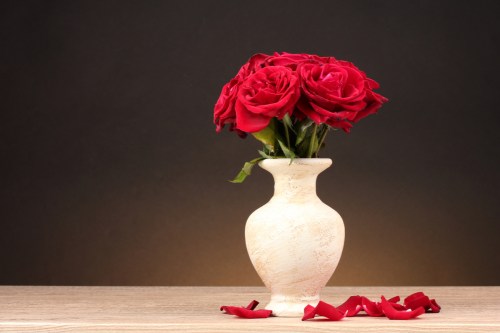Roses can be such a thoughtful gift. Whether it’s a single red rose from an admirer or a bouquet from your friends to celebrate a special occasion or achievement, there’s something exciting and heartwarming about receiving roses — and giving fresh roses can be just as thrilling and joyous, too. If only they lasted longer!
Cut roses can last about a week in plain water before they begin to wilt and die. There are a lot of online retailers and companies that sell specially preserved roses, some of which claim to last up to a year. However, if the idea of chemically-preserved roses doesn’t sit well with you, or if you don’t want to pay the extra cost for these special flowers, there are still options. We’re going to lay out everything you need to know to make your roses last as long as possible. So, without further ado, here's how to make roses last longer.
Start with a long-lasting rose
You can't always choose the rose variety you receive. But if you have a choice, aim for a long-lasting variety. How long different rose varieties last has not been significantly studied, but there has been one study done by the American Floral Endowment. The AFE looked at 16 different rose varieties and measured how long they lasted in water and in plant food, as well as how much the blooms opened. The longest-lasting rose variety from their study was Poison, a lovely dark pink variety, followed by Reward and Valentino roses. These three lasted several days longer than other varieties on average.

How to prune roses the right way
Remove all leaves below the waterline of your vase or container. Doing so helps keep the flowers from growing bacteria and improves the health of your roses.
Step 1: If your roses have what are referred to as “guard petals,” which are the larger, outermost petals that protect the not-yet-bloomed petals, remove these.
By removing the guard petals, you can help your roses open up more fully.
Step 2: After the initial day that you prune your flowers, be sure to remove loose or dead leaves and petals, which will also help make your roses last longer.
How to use the proper solution for roses
The end of the stem is how the flower absorbs water and nutrients that allow it to stay fresh. Over time, though, it dries out and, shortly after, so does your flower.
Step 1: Upon receiving your flowers, fill a vase with fresh water.
If your tap water contains many chemicals or minerals, use filtered water.
Step 2: Cut the ends of the stems off and put the flowers into the water-filled vase.
Cutting stem ends opens the supply line back up and lets the cut flower take in fresh water.
Step 3: Adding a proper plant food labeled for cut flowers can increase the lifespan of your cut flowers.
Some foods that are meant for hydroponically grown plants may help, but they may have ingredients that will go to waste, such as things meant to stimulate root growth.
Step 4: If you do not have any plant food, you can use a bit of sugar instead.
Step 5: When the flowers begin to wilt, cut the end of the stem again and change out the water.
The flowers should perk back up fairly quickly.
Step 6: Do not add soda to your water or place the flowers directly into soda.
Some life hack videos and lists claim that soda will help cut flowers last longer, but there is no evidence this works. The caffeine and carbonation isn’t very good for the flowers. However, flat, caffeine-free soda can act as sugar water for your plants for a short time.
What to avoid as you're maintaining your cut roses
After all of your hard work trimming and feeding your cut flowers, you want to make sure to situate your vase in an ideal environment. First and foremost, you'll want to avoid leaving your flowers in any drafty areas, which could dehydrate and degrade the blooms. The same goes with direct sunlight — while your flowers need full sun as they're growing, they really fare better in less light now that they're cut. It's also a good idea to avoid leaving your flowers next to fruit, as the ethelyne gas produced by ripening fruit could contribute to wilting, dropping petals.
How to preserve the flowers
Of course, no rose can live forever. If you’d like to keep them forever or at least for longer, you can preserve your cut flowers.
Step 1: The best method of drying cut roses is to hang them upside down in a dry, dark place for two weeks.
Step 2: If you would prefer a more permanent solution, you can cut the stem off the rose and encase the flower itself in resin.
Pressed roses in resin can make for excellent coasters and are a lovely way to keep your flowers for a lifetime.
Now, you know the tips and tricks for keeping your roses bright and fresh for as long as possible! Starting with a longer-lasting rose variety can be a big boost, but even if your roses aren’t a long-lasting variety, keeping the water fresh, adding a little sugar to it, and cutting stem ends will still work. When your roses come to the natural end of their lives, consider drying them or preserving them in resin to make them last even longer. However you've come to receive your roses, we hope that you enjoy them for as long as possible!
Editors' Recommendations
- How to get a green lawn that will make your neighbors green with envy
- 7 gorgeous types of roses every gardener should know
- Hardening off your seedlings as you bring them outside is crucial – here’s how to do it
- How to care for gardenia, a fragrant, heat-loving bloom
- How often should you water your grass seeds? Here’s what we know